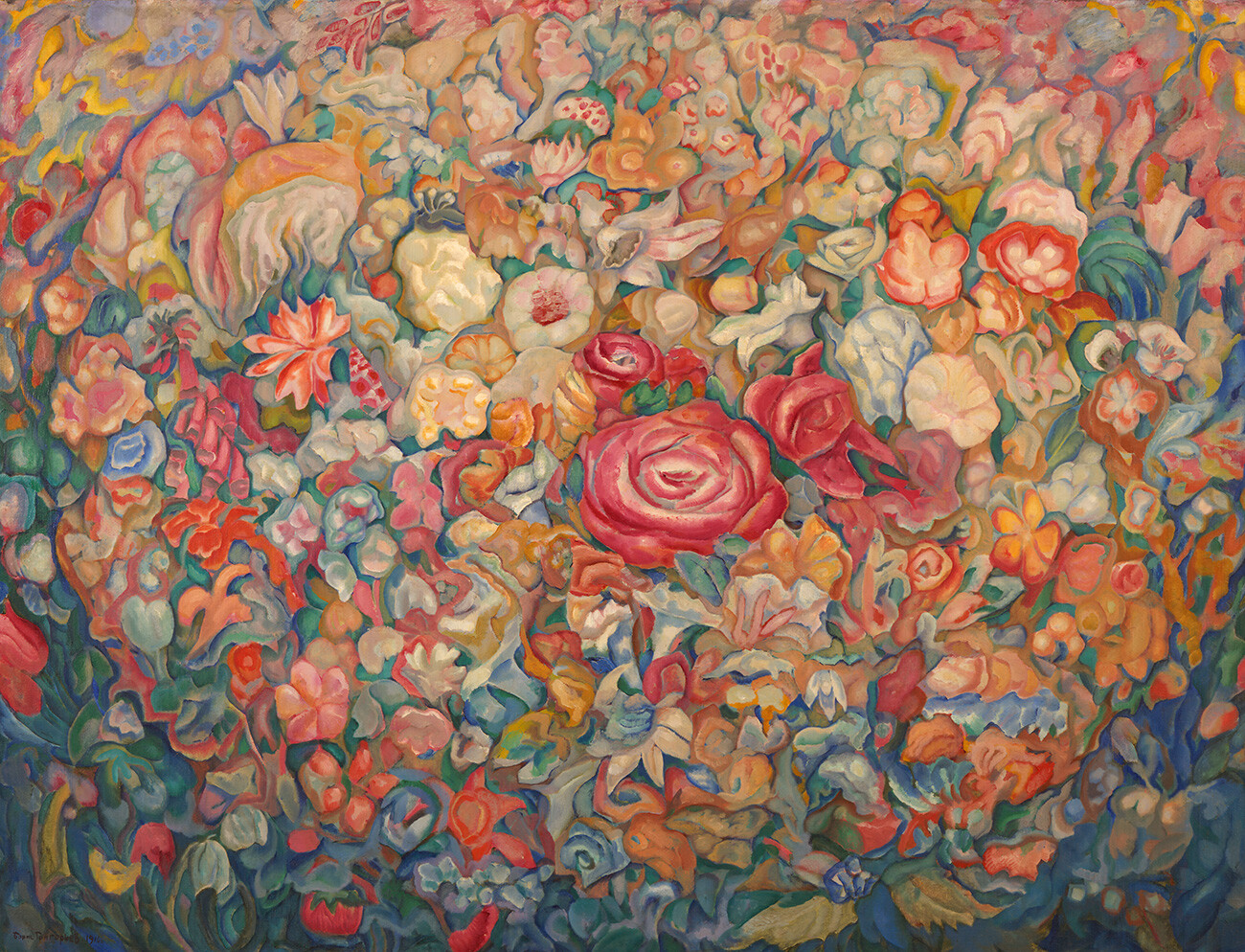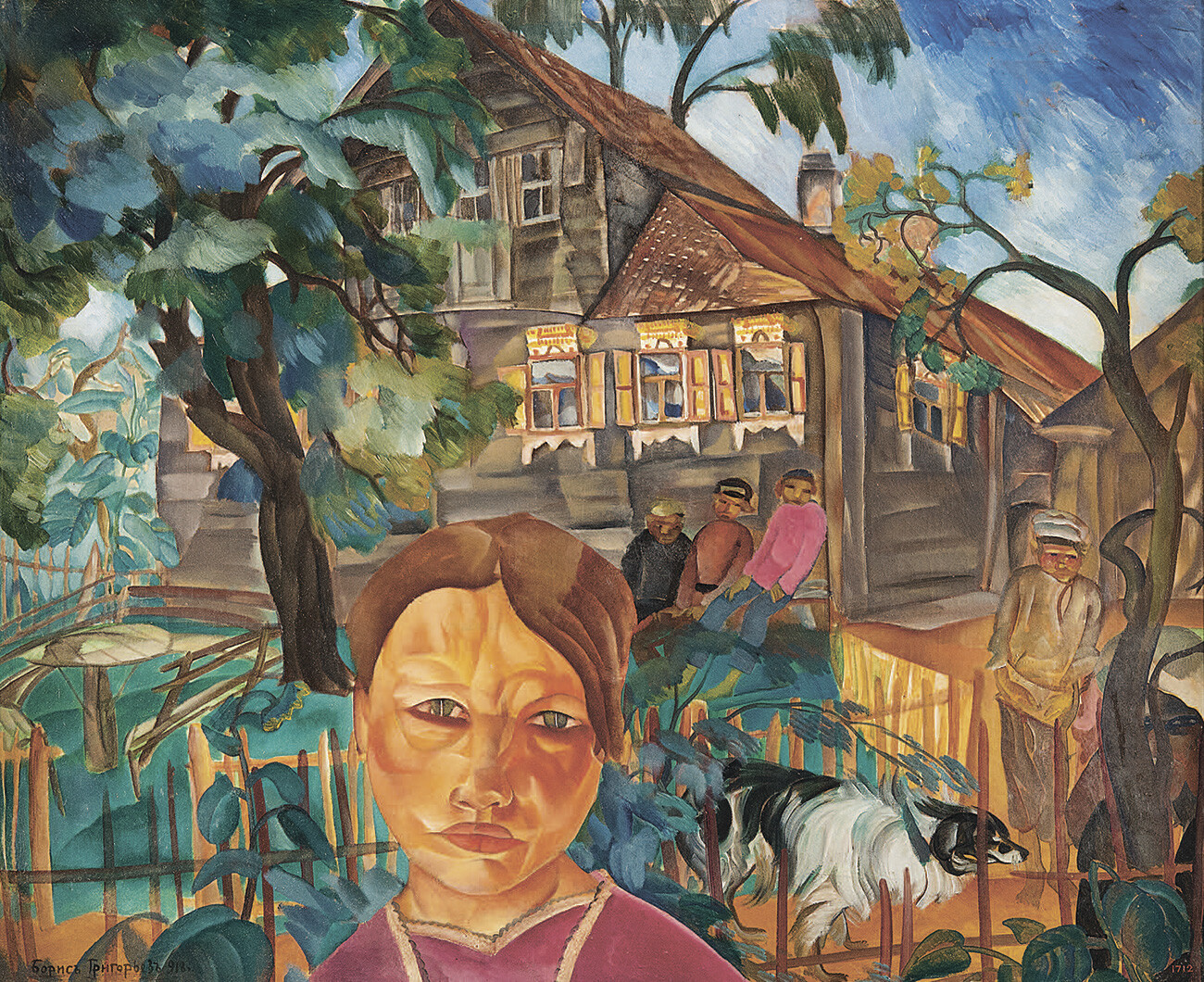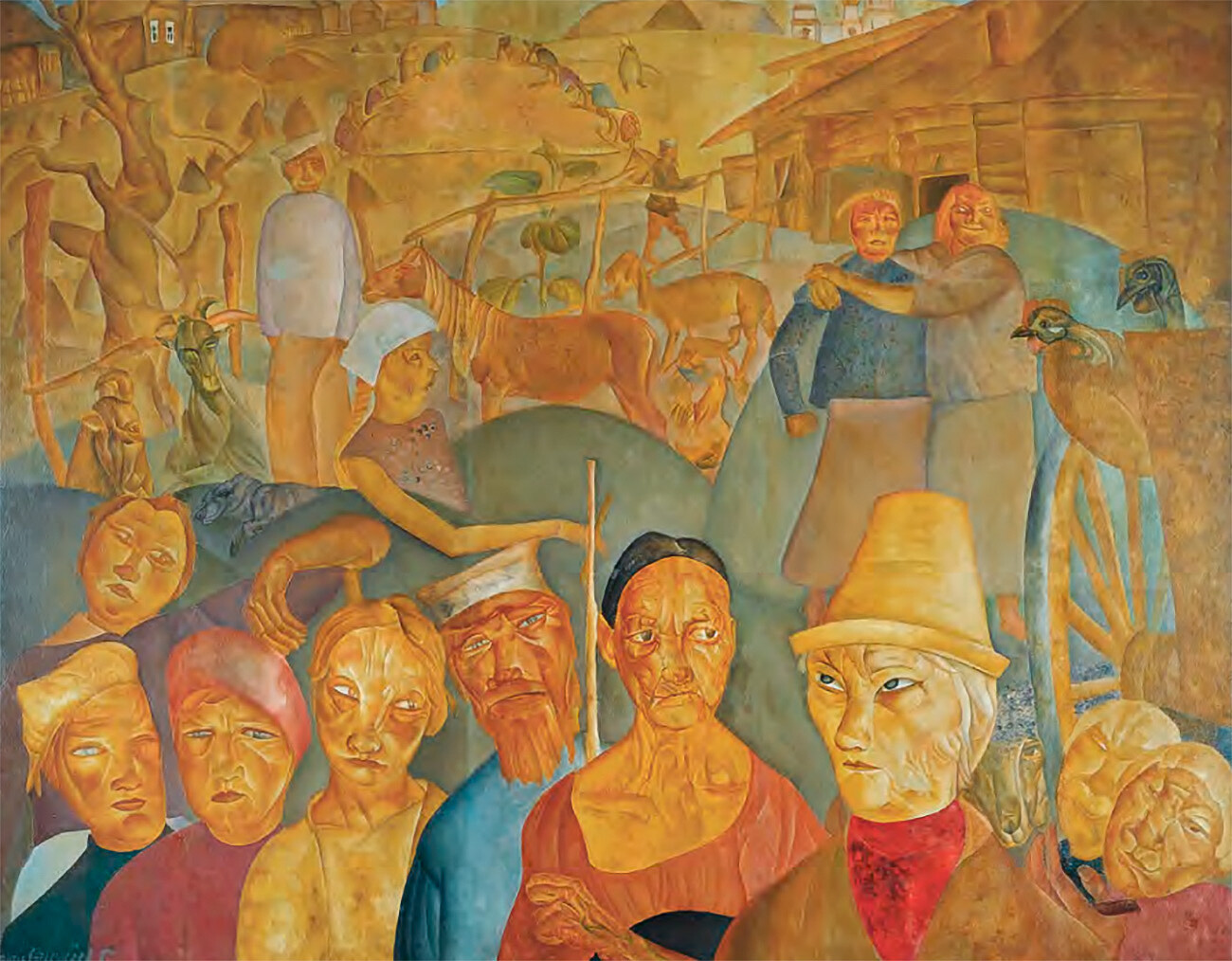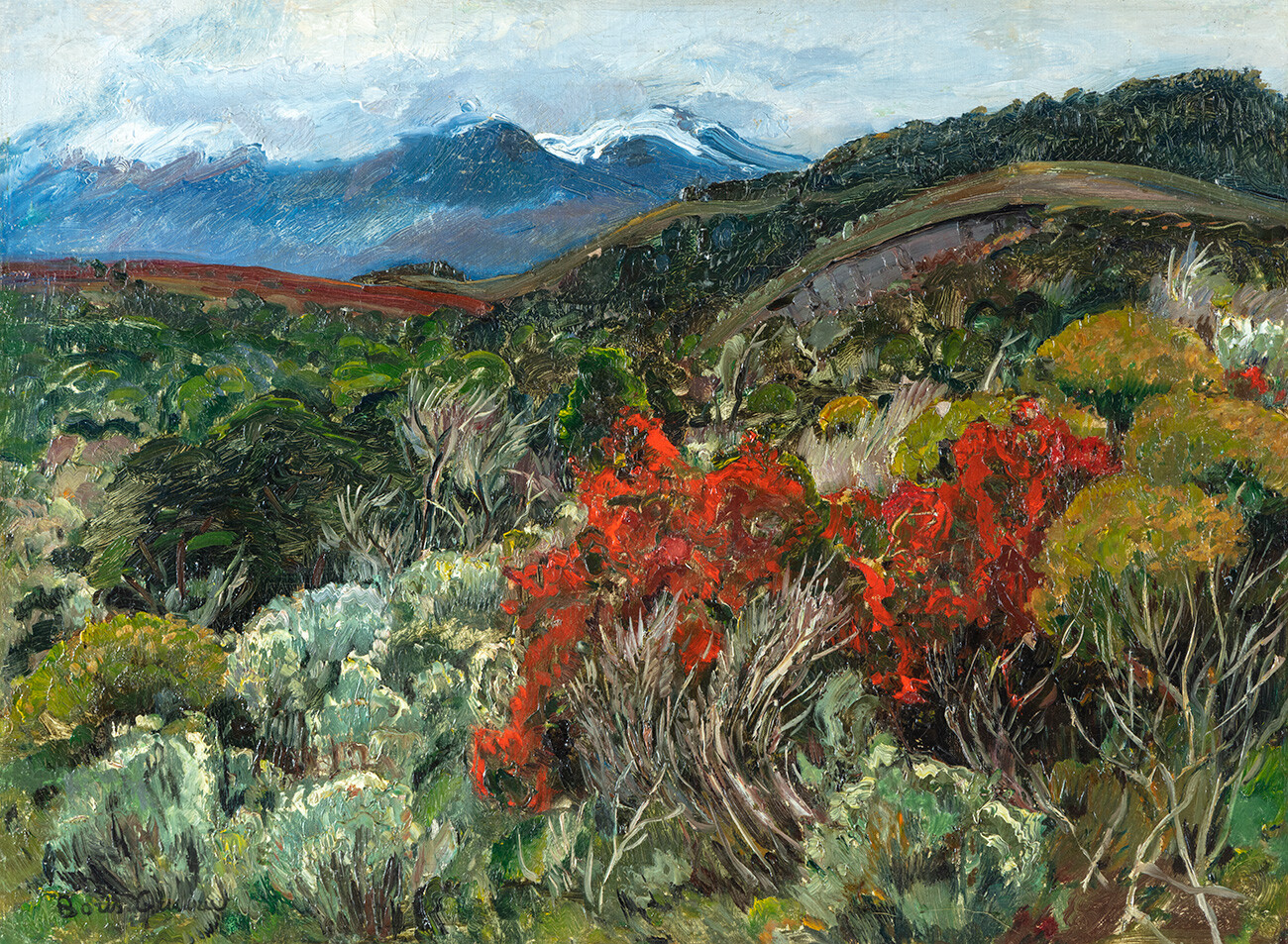7 masterpieces of Boris Grigoriev you should know

This Russian artist, who was extremely popular in the West during the 1920s and 1930s, was until recently almost forgotten in his own country. And many of his works were considered lost.
1. 'Flowers' (decorative panel), 1916

Tretyakov Gallery
Boris Grigoriev was born in Moscow, but studied and began his career at the Art Academy in St. Petersburg. One of the prominent collectors in the capital at that time was Alexander Korovin, owner of textile stores and an art connoisseur with good taste. He was one of the first to start buying Grigoriev's works; he took painting lessons from him and the two became friends. A prominent place in Korovin's aesthetic artistic house was assigned to a vivid portrait of Vsevolod Meyerhold painted by Grigoriev. This panel from the Tretyakov Gallery, which has the collector's name in its origin, was most likely also exhibited in his house.
2. 'The Street of Blondes', 1917

Scientific research museum under the Russian Academy of Arts
Grigoriev began traveling abroad while still a student. First he visited his mother's relatives in Sweden (he was the illegitimate child of Clara von Lindenberg and the banker Dmitrij Grigoriev and was adopted by his father's family at the age of four). In 1913, the aspiring artist went to Paris where he studied for four months at the private Academie de la Grande Chaumière, absorbed impressions and made preparatory studies for a painting competition at the Academy of Fine Arts. Several series depicting scenes from the daily life of Parisian singers, dancers, circus performers and prostitutes also started there. All of them were later included in the series 'Intimitet' (Intimacy) and a book of the same name published in 1918. The painting 'Street of Blondes', depicting a Parisian woman of easy virtue, was the first double page spread in the book.
3. 'The Village', 1918

Russian Museum
In the years 1916-1918, on the eve of and in the wake of the Bolshevik Revolution, which divided the lives of many (including Grigoriev himself and the publisher Alexander Burtsev who had given him his first commissions) into "pre" and "post". -", the artist worked on paintings and drawings in the series 'Raseya' ('Russia'). The works were shown at exhibitions in Petrograd and Moscow and were published in an album of the same name that came out in 1918. The main characters of the series are the inhabitants of villages in the northern part of Russia, but the authorities disapproved of the way he had interpreted and represented them to such an extent that the album was banned until the collapse of the Soviet Union. Grigoriev left the country with his family in 1919 and finished work on the series in exile abroad, where another, expanded version of the album "Raseya" was published.The series itself would be one of the key works of the master's creative output.
4. 'Faces of Russia', 1921

Palace of Congresses State Complex
Abroad, Grigoryev did quite well for himself - perhaps none of his compatriots were as popular and exhibited as often. He wrote: "I'm the number one champion of the world now. I don't apologize for these phrases. You have to know who you are or you don't know how to act." The huge canvas "Faces of Russia" was painted when he moved from Berlin to Paris and had such a meaning for him personally that he never parted with it, except for exhibitions in Paris and New York.
5. 'Portrait of Aleksej Maximovich Gorky [Maxim Gorky]', 1926

AM Gorky Museum
Many of the prominent figures of Russian culture in the early 20th century aspired to pose for Grigoriev. He created a large gallery of portraits of famous contemporaries. The poets Sergei Yesenin and Velimir Khlebnikov, the artists Ilya Repin and Nicholas Roerich, the theater director Vsevolod Meyerhold and the opera singer Feodor Chaliapin are just a small selection of his sitters. Grigoriev worked painstakingly, sketching the face, movements and color from life. The portraits were then completed without the presence of the sitters – "An impression (and thus receptivity on its own) can do more than work from life," he explained. In the portrait of Gorky, the artist placed the writer, posing for him on Capri, among the characters of his play "The Lower Depths", which he had seen several years earlier when the Moscow Art Theater had been on tour in Paris.
6. 'The Spirits', 1928-29

Private collection
Grigoriev prospered to such an extent that he could afford a house on the Cote d'Azur. The villa was called "Borisella", combining the names of its two owners - Boris and his wife Ella. He did not move in immediately: in 1928 the artist was offered a professorship at the Academy of Painting in Santiago, Chile.
He did not refuse and although a career there did not work out, Grigoriev managed to hold an exhibition in Argentina and travel around Latin America, painting a number of works from his travels. He was there again in the late 1930s, arriving from the United States
7. 'The Government Inspector', 1935

The Link of Times Cultural History Foundation
The 'Government Inspector' canvas, like the series of illustrations for Dostoyevsky's 'The Brothers Karamazov', is one of those works never before seen by the Russian public. They were acquired at auctions in the West by Viktor Vekselberg for his Link of Times Foundation. This late work, made not long before the artist's death, is a kind of summation of his creative career in the art of printed illustration, which began during his student years when he illustrated the Russian classics for the publisher Alexander Burtsev. The painting was part of the series 'Faces of Russia', which was a kind of continuation of 'Raseya'.
A retrospective exhibition of Boris Grigoriev's work, "The World's Number One Master", has opened in the new wing of Fabergé museum in St. Petersburg and will last until January 28, 2024.
Dear reader,
Our website and social media accounts are under threat of being restricted or banned due to current circumstances. So to stay up to date with our latest content, just do the following:
- Subscribe to our Telegram channel
- Subscribe to our weekly email newsletter
- Enable push notifications on our website
- Install a VPN service on your computer and/or phone to access our website, even if it is blocked in your country
https://nord.news/2023/09/28/7-masterpieces-of-boris-grigoriev-you-should-know/?feed_id=47151
Comments
Post a Comment